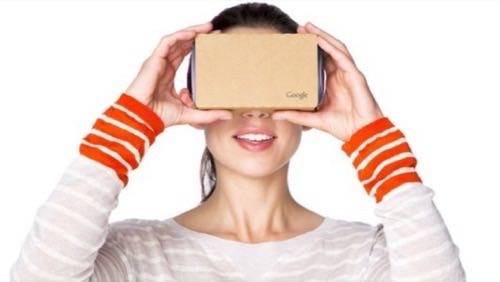The New York Times is giving out Google Cardboard kits to its one million subscribers. The free gifts will ship in advance of the November 7 release of its new virtual reality film, The Displaced.
Produced by the New York Times Magazine and the first in a planned series of short movies from the news organization, Displaced will tell the story of “three extraordinary children uprooted by war.” This marks a landmark moment in the use of VR to tell a news story, and the NYT’s goal is to offer the viewer “a unique sense of empathic connection to people and events,” as NYT Magazine editor Jake Silverstein puts it. The approach is also a huge vote of confidence, not just in virtual reality, but also for Google’s DIY viewer.
See also: Virtual-Reality Films Could Put The Whole Industry In The Spotlight
Cardboard, a corrugated paper box with a couple of lenses, offers a blueprint for a basic VR viewer powered by an Android smartphone. (Users can buy pre-made kits or build their own.) It seemed strange at first that Google would create such a cheap, bare-bones viewer. Then again, not everyone can afford an Oculus Rift, and it’s hard to imagine anyone handing out a million premium VR goggles. The aim of Cardboard has always been to bring VR to the masses, and the NYT’s move could help Google succeed in its goal.
Of course, Cardboard can’t do everything an expensive Oculus Rift can, but it can act as an on-ramp for users and developers interested in what VR has to offer. Now a million NYT readers will join the fold.
VR: In The News

At its most basic level, a VR movie offers a 360-degree perspective, so viewers can look behind or around them, as well as straight at “the action.” The format is now supported by YouTube and Facebook, and creating these kinds of movies is quickly becoming easier and more affordable too.
In fact, if the technology establishes itself, there could be little point in sticking to 2D footage if the 360-degree format was available. For news reporting, it could make for a dramatic experience.
“In the context of international reporting and conflict reporting, where our readers rely on us to bring them news and stories from remote and inaccessible places, this has huge potential,” added Silverstein in a press statement. “Through this immersive video experience, we can put our readers at the center of the most important story of our time.” Think of it as the difference between seeing one small window of a local or world event, and feeling like you’re there and taking it all in.
The New York Times looks set to be the first of many news organizations to make some of their stories available through virtual reality. At a recent journalism conference, the VR sessions had some of the most well-known news organizations in the world in attendance.
As with games and movies, there’s a lot more to come from virtual reality—news, education and Street View for starters. And for many, Google Cardboard is going to be the way in.
Images courtesy of Google










